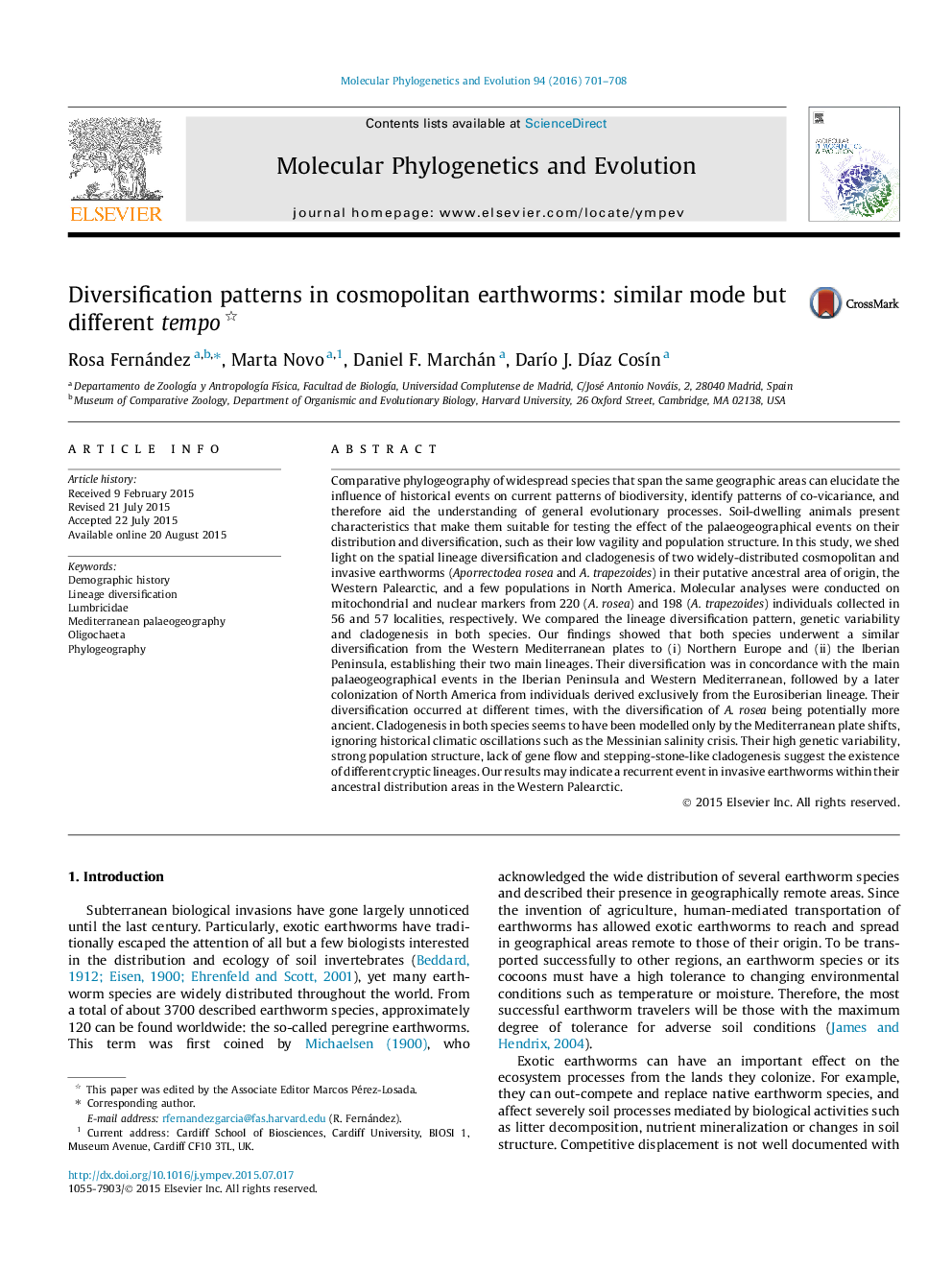| کد مقاله | کد نشریه | سال انتشار | مقاله انگلیسی | نسخه تمام متن |
|---|---|---|---|---|
| 5918607 | 1164241 | 2016 | 8 صفحه PDF | دانلود رایگان |

- We compare the spatial diversification and cladogenesis in two invasive lumbricids that span the same geographic areas.
- Both species underwent similar radiation from the Western Mediterranean plates, establishing their main two lineages.
- Their diversification was in concordance with the main palaeogeographical events in the Western Mediterranean.
- Our results may indicate a recurrent event in invasive earthworms within their ancestral areas in the Western Palearctic.
Comparative phylogeography of widespread species that span the same geographic areas can elucidate the influence of historical events on current patterns of biodiversity, identify patterns of co-vicariance, and therefore aid the understanding of general evolutionary processes. Soil-dwelling animals present characteristics that make them suitable for testing the effect of the palaeogeographical events on their distribution and diversification, such as their low vagility and population structure. In this study, we shed light on the spatial lineage diversification and cladogenesis of two widely-distributed cosmopolitan and invasive earthworms (Aporrectodea rosea and A. trapezoides) in their putative ancestral area of origin, the Western Palearctic, and a few populations in North America. Molecular analyses were conducted on mitochondrial and nuclear markers from 220 (A. rosea) and 198 (A. trapezoides) individuals collected in 56 and 57 localities, respectively. We compared the lineage diversification pattern, genetic variability and cladogenesis in both species. Our findings showed that both species underwent a similar diversification from the Western Mediterranean plates to (i) Northern Europe and (ii) the Iberian Peninsula, establishing their two main lineages. Their diversification was in concordance with the main palaeogeographical events in the Iberian Peninsula and Western Mediterranean, followed by a later colonization of North America from individuals derived exclusively from the Eurosiberian lineage. Their diversification occurred at different times, with the diversification of A. rosea being potentially more ancient. Cladogenesis in both species seems to have been modelled only by the Mediterranean plate shifts, ignoring historical climatic oscillations such as the Messinian salinity crisis. Their high genetic variability, strong population structure, lack of gene flow and stepping-stone-like cladogenesis suggest the existence of different cryptic lineages. Our results may indicate a recurrent event in invasive earthworms within their ancestral distribution areas in the Western Palearctic.
121
Journal: Molecular Phylogenetics and Evolution - Volume 94, Part B, January 2016, Pages 701-708